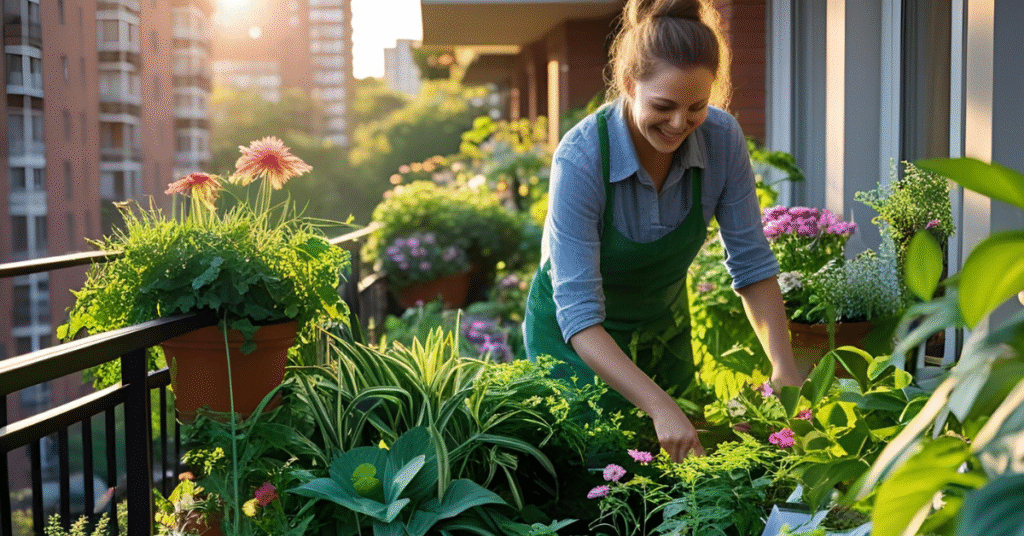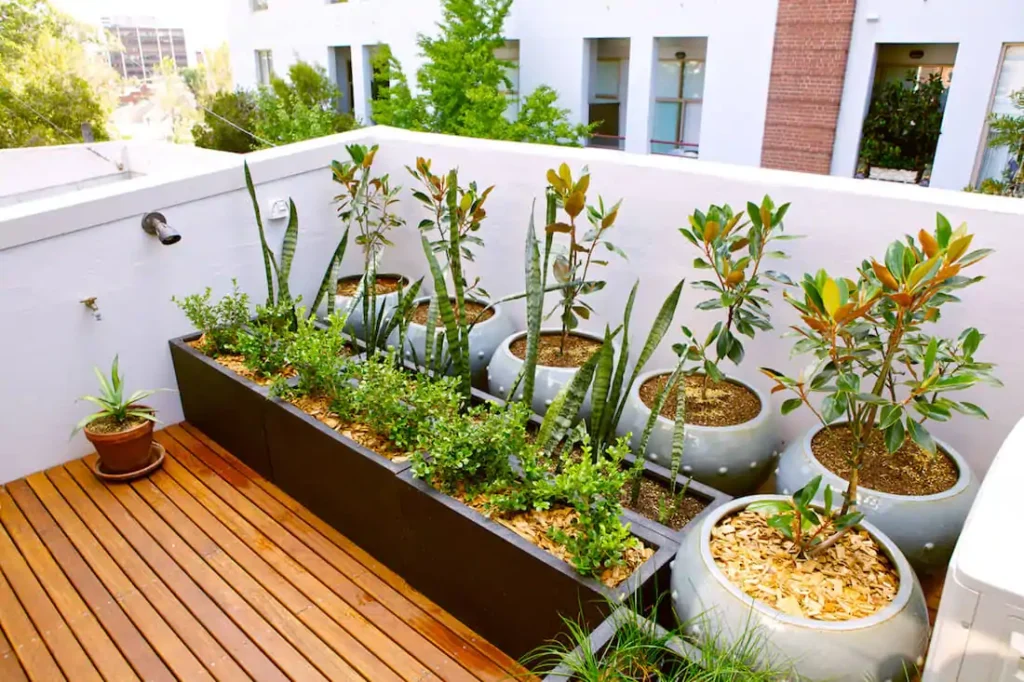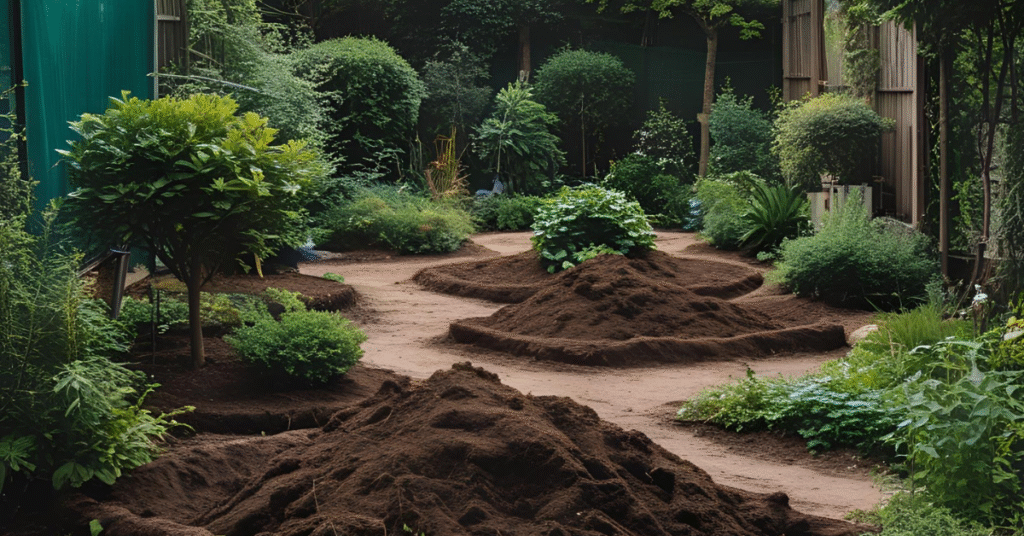Rainwater harvesting for urban gardens isn’t just an eco-friendly trend—it’s becoming essential for city dwellers who want thriving gardens without breaking the bank on water bills. Whether you’re growing herbs on a balcony or managing a rooftop vegetable garden, collecting rainwater can provide your plants with naturally soft, chlorine-free water while reducing stormwater runoff in your neighborhood.
Quick Win for Urban Gardeners
A simple 55-gallon rain barrel can collect over 300 gallons of water monthly in moderate rainfall areas—enough to keep a typical urban garden thriving during dry spells while cutting your water costs significantly.
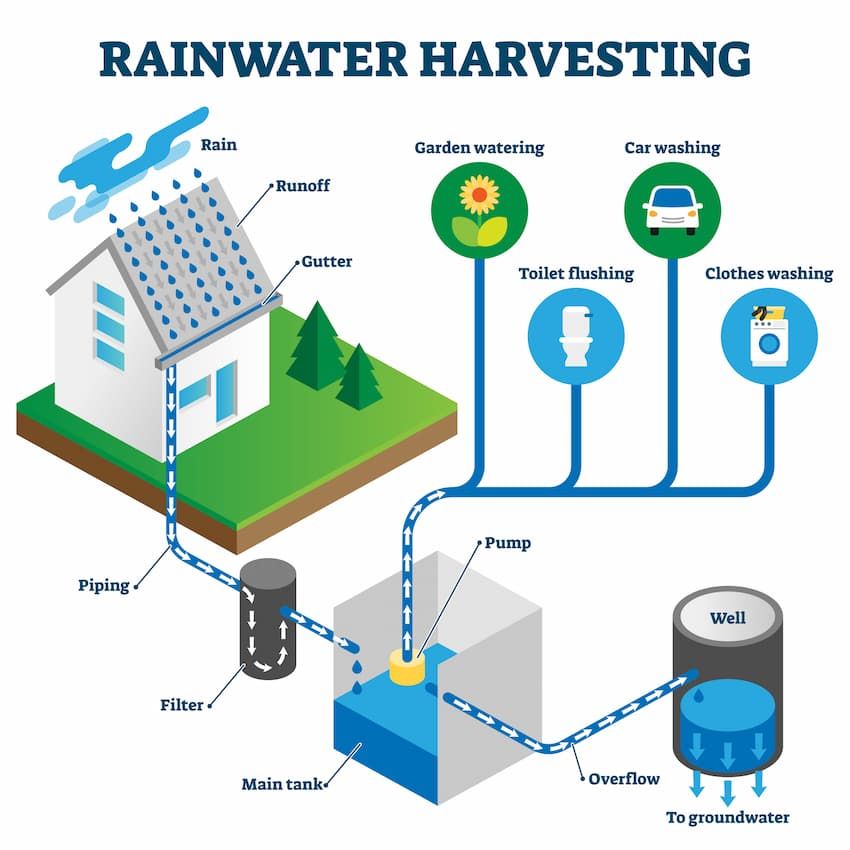
Why Rainwater Harvesting Transforms Urban Gardens
Environmental Benefits
- Reduces stormwater runoff and flooding
- Decreases demand on municipal water systems
- Prevents soil erosion in urban areas
- Creates habitat for beneficial insects
Garden Benefits
- Chemical-free water perfect for vegetables
- Naturally soft water plants prefer
- Consistent water supply during dry spells
- Reduced water bills by 30-50%
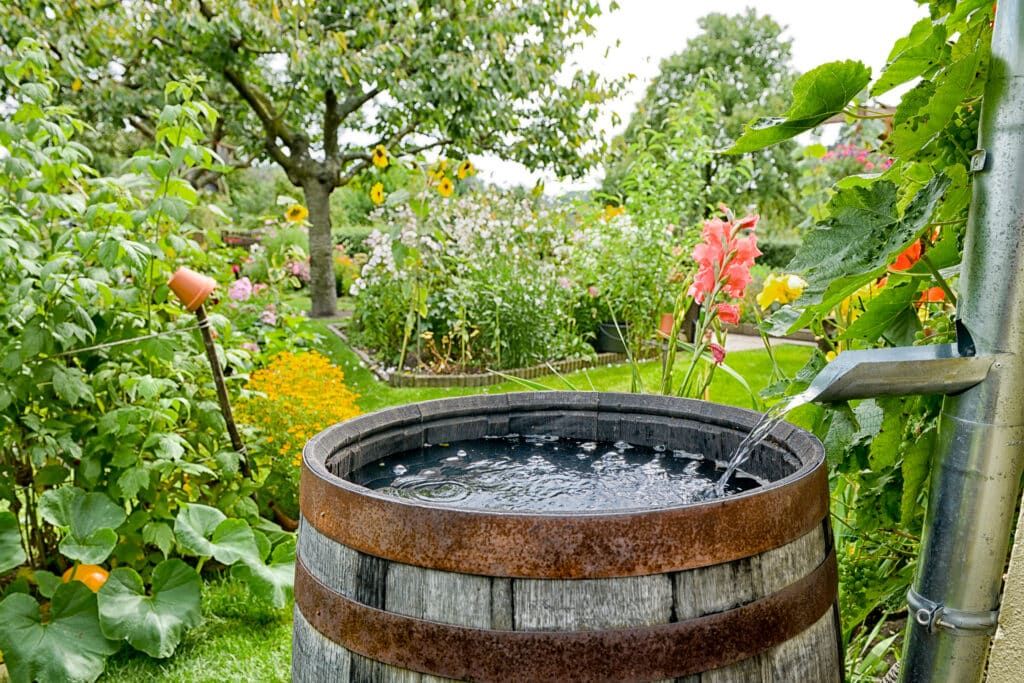
How Much Water Can Your Urban Garden Collect?
Simple Collection Formula
Roof Area (sq ft) × Rainfall (inches) × 0.62 = Gallons Collected
Small Urban Setup
500 sq ft roof area
- 1″ rain = 310 gallons
- 2″ rain = 620 gallons
- Monthly potential: 400+ gallons
Medium Urban Garden
1,000 sq ft roof area
- 1″ rain = 620 gallons
- 2″ rain = 1,240 gallons
- Monthly potential: 800+ gallons
Large Urban Space
1,500 sq ft roof area
- 1″ rain = 930 gallons
- 2″ rain = 1,860 gallons
- Monthly potential: 1,200+ gallons
Real-World Example
A typical urban townhouse with 1,200 square feet of roof can collect over 1,500 gallons from just 2 inches of rainfall—enough to sustain a substantial vegetable garden for several weeks during dry periods.
Rainwater Harvesting Systems for Urban Spaces
Rain Barrels: The Urban Garden Starter
Perfect for small urban spaces, rain barrels are the most accessible entry point into rainwater harvesting for urban gardens. They’re compact, affordable, and can be installed in an afternoon.
Best For:
- Balcony and patio gardens
- Container vegetable gardens
- Herb gardens and small plots
- First-time rainwater harvesters
Typical Collection:
55-gallon barrel fills from just 1/4 inch of rain on a small roof
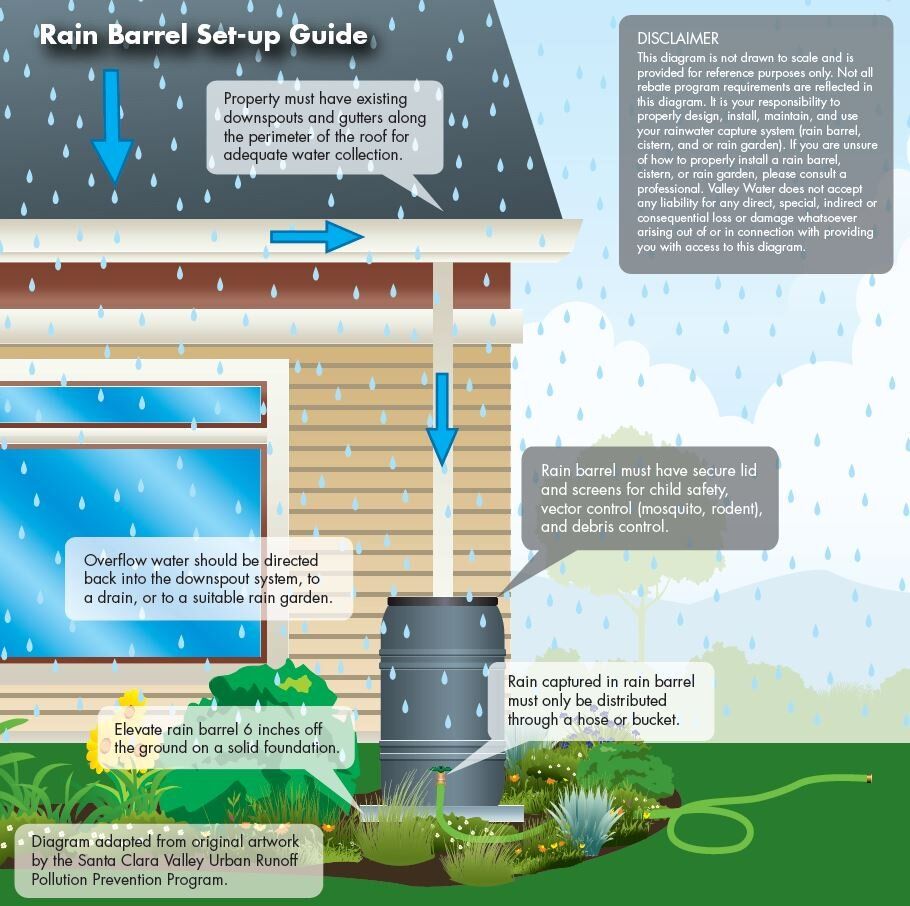
Rain Gardens: Nature’s Storage System
Rain gardens capture and filter stormwater runoff while creating beautiful landscaping. They’re incredibly effective at managing large volumes of water naturally.
Best For:
- Yards with drainage issues
- Large water collection areas
- Native plant enthusiasts
- Long-term water management
Water Capacity:
Can infiltrate 30% more water than conventional landscaping
Advanced Collection Systems
For serious urban gardeners, advanced systems combine multiple collection methods, filtration, and automated distribution for maximum efficiency.
Underground Cisterns
Store 1,000+ gallons below ground, perfect for intensive urban farming
Linked Rain Barrel Systems
Multiple barrels connected for increased storage capacity
Rooftop Collection
Dedicated systems for apartment building rooftops
DIY Rainwater Harvesting: Step-by-Step Setup
Before You Start
- Check local regulations and HOA rules
- Ensure proper drainage away from foundations
- Consider mosquito prevention measures
- Plan for overflow during heavy rains
Rain Barrel Setup (Beginner-Friendly)
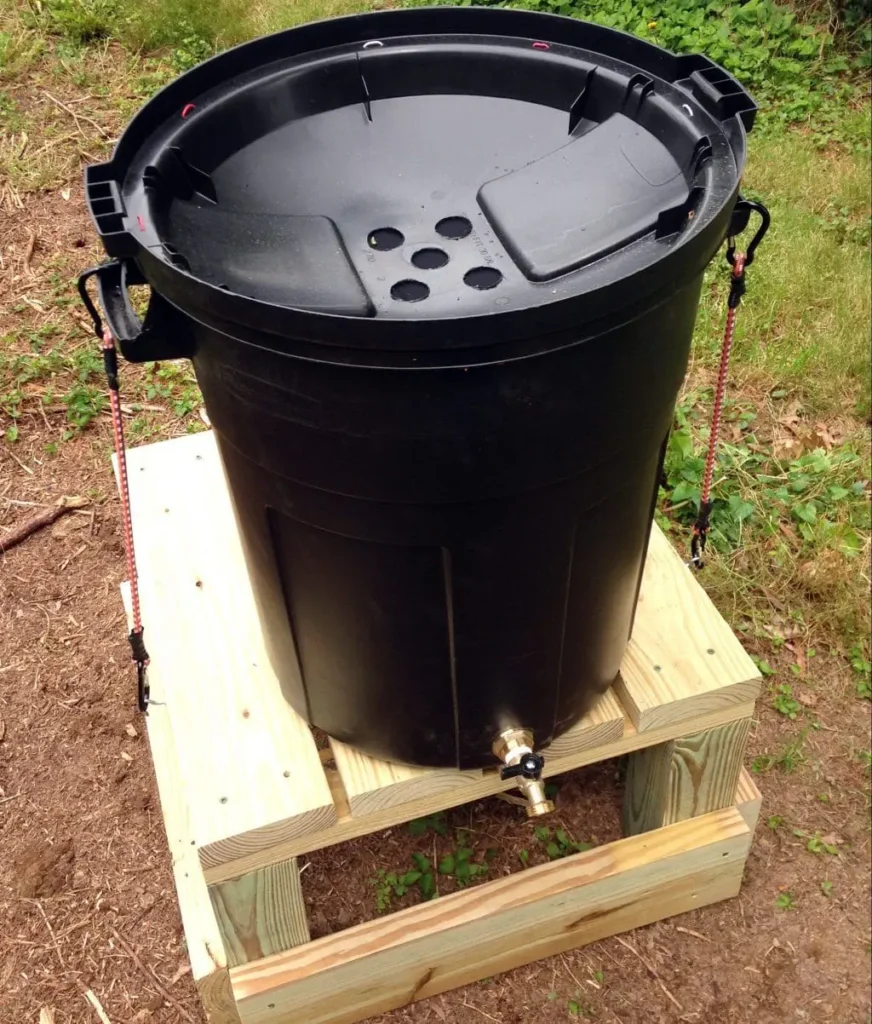
Materials Needed:
- 55-gallon food-grade barrel ($30-60)
- Spigot and fittings ($15-25)
- Mosquito screening ($10-15)
- Concrete blocks for elevation ($20-30)
- Flexible downspout extension ($10-15)
Total Cost: $85-145
Installation Steps:
- Level the installation area
- Install spigot 6″ from bottom
- Add overflow pipe near the top
- Secure mosquito screen over opening
- Connect to downspout
- Test system during next rainfall
Creating a Simple Rain Garden
Rain gardens work by capturing runoff in a shallow depression where it can slowly infiltrate into the soil rather than running off your property.
Site Selection:
- 10+ feet from building foundations
- Natural low spot or create gentle depression
- Receives runoff from roof or paved areas
- Gets 4-6 hours of sunlight daily
Construction Basics:
- Dig 6-8 inches deep, 3-4 feet wide
- Create gentle sloping sides
- Add 2-3 inches of mulch
- Plant with native species
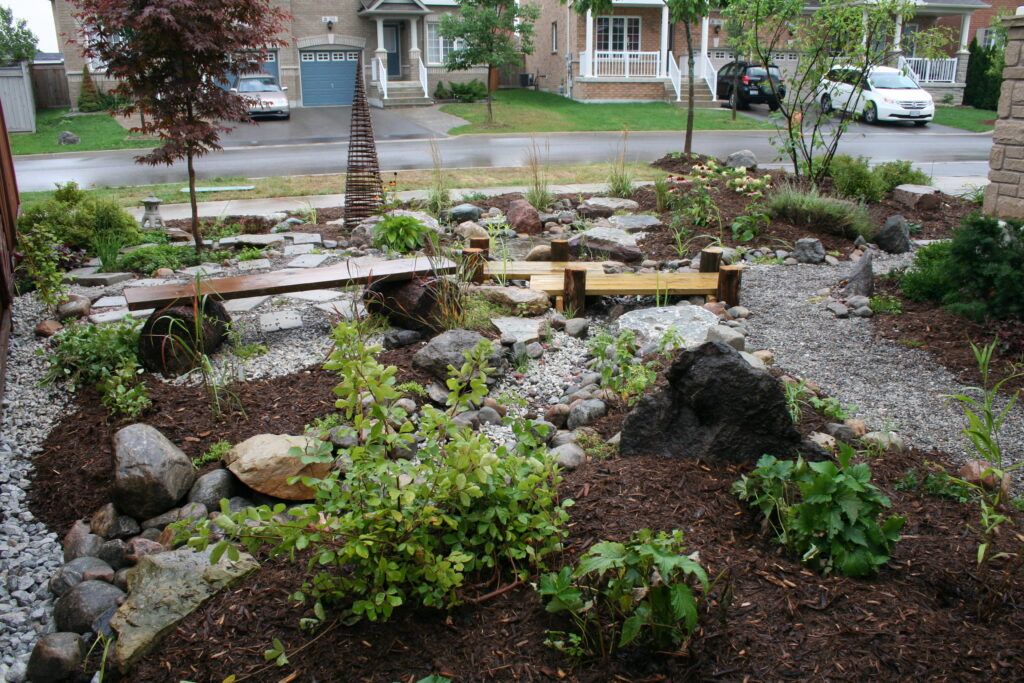
Using Rainwater Safely on Vegetables and Herbs
Safety First
While rainwater is generally excellent for gardens, following proper safety practices ensures your harvested vegetables and herbs are safe to eat.
Safe Practices
- Wait 3 weeks: Use rain barrel water only on vegetables you won’t harvest for at least 3 weeks
- Water soil, not leaves: Direct water to the root zone to avoid splashing onto edible parts
- First flush diversion: Let initial rainfall wash your roof before collecting
- Clean collection surfaces: Keep gutters and roof areas free of debris
Avoid These Situations
- Painted roofs: Older paint may contain lead or other contaminants
- Treated wood roofing: Pressure-treated materials can leach chemicals
- Industrial areas: Higher risk of air pollution contamination
- Stagnant water: Empty barrels within a week to prevent bacteria growth
Research Findings
Studies by the University of Connecticut Extension found that “rain barrel water can be safely utilized to irrigate vegetable and herb gardens” when proper collection and watering practices are followed. The key is maintaining good hygiene practices and avoiding direct contact with edible plant parts.
Best Plants for Rainwater Harvested Urban Gardens
Choosing the right plants for your rainwater harvesting system maximizes water efficiency while creating a thriving urban ecosystem. Focus on plants that can handle variable moisture levels and benefit from chemical-free rainwater.
Vegetables
- Leafy Greens: Lettuce, spinach, kale
- Herbs: Basil, oregano, thyme
- Root Vegetables: Carrots, radishes
- Brassicas: Broccoli, cabbage
- Legumes: Beans, peas
Rain Garden Plants
- Native Grasses: Little bluestem, buffalo grass
- Perennials: Black-eyed Susan, echinacea
- Sedges: Various Carex species
- Wildflowers: Asters, goldenrod
- Shrubs: Native elderberry, spicebush
Container Gardens
- Compact Vegetables: Cherry tomatoes, peppers
- Aromatic Herbs: Rosemary, sage, mint
- Flowers: Marigolds, nasturtiums
- Strawberries: Ever-bearing varieties
- Microgreens: Fast-growing varieties
Planting Strategy for Water Efficiency
High Water Zone (Near Collection)
Plant water-loving vegetables and herbs where rainwater naturally collects:
- Swiss chard and spinach
- Mint and watercress
- Celery and lettuce
Medium Water Zone (Surrounding Areas)
Place moderate water users in areas receiving spillover:
- Tomatoes and peppers
- Basil and parsley
- Bush beans and peas
Maintenance and Troubleshooting Your System
Regular Maintenance Tasks
Monthly (Growing Season)
- Clean debris from gutters and screens
- Check for mosquito larvae and treat if needed
- Inspect spigots and connections for leaks
- Ensure overflow pipes are clear
Seasonally
- Deep clean barrels with vinegar solution
- Replace worn seals and gaskets
- Trim vegetation around rain gardens
- Prepare system for winter storage
Winter Prep
- Drain all water to prevent freezing
- Disconnect and store removable components
- Cover open barrels to prevent debris
- Document any needed repairs for spring
Common Issues and Solutions
Mosquito Problems
Stagnant water attracts mosquitoes
- Install tight-fitting screens
- Add mosquito dunks (Bt bacteria)
- Use water within 7 days
- Consider small fountain pump for circulation
Low Water Collection
System not filling as expected
- Check for leaks in gutters and connections
- Clear blocked downspouts and filters
- Verify proper drainage slope
- Consider adding collection area
Overflow Issues
Water not draining properly during heavy rain
- Install larger overflow pipe
- Create secondary overflow path
- Add gravel infiltration area
- Consider linking multiple barrels
Seasonal Optimization Tips
Spring
Capitalize on heavy spring rains by ensuring all systems are clean and functional. This is prime collection season for most urban areas.
Summer
Focus on water conservation and regular system checks. Use stored water efficiently during peak growing season.
Fall/Winter
Prepare systems for dormancy and plan improvements for next season. Clean equipment while weather permits.
Investment and Savings Analysis
Real Savings Breakdown
Rainwater harvesting for urban gardens typically pays for itself within 2-3 years through reduced water bills and improved garden productivity.
Annual Water Savings
- Average urban garden: 2,000-4,000 gallons
- Municipal water cost: $0.004-0.010/gallon
- Annual savings: $8-40
- Premium for treated water: Additional 20-30%
Garden Productivity Benefits
- 15-25% higher yields with soft rainwater
- Reduced plant stress during dry spells
- Better nutrient uptake without chlorine
- Extended growing season capability
| System Type | Initial Cost | Annual Savings | Payback Period | Best For |
|---|---|---|---|---|
| Basic Rain Barrel | $85-145 | $15-30 | 3-5 years | Small urban gardens, containers |
| Multi-Barrel System | $200-400 | $40-80 | 3-6 years | Medium urban gardens |
| Rain Garden | $150-500 | $25-60 | 3-8 years | Large spaces, drainage issues |
| Advanced System | $800-2,500 | $150-400 | 4-8 years | Intensive urban farming |
Cost-Saving Tips
- Buy rain barrels during off-season sales
- Use recycled food-grade containers
- Join community bulk-buying groups
- Build simple systems yourself
- Start small and expand gradually
Incentives and Rebates
- Many municipalities offer rain barrel rebates
- Stormwater management credits in some areas
- Environmental organization discounts
- HOA or community garden group purchases
- Check with local water utilities
Frequently Asked Questions
How much rainwater can I collect for my urban garden?
You can collect approximately 0.62 gallons of water per square foot of roof area for every inch of rainfall. For example, a 1,000 square foot roof can collect 560-620 gallons from just one inch of rain. Even a small urban space with 500 square feet of collection area can gather over 300 gallons monthly during moderate rainfall periods—enough to sustain most urban gardens through dry spells.
Is rainwater safe for vegetables and herbs?
Yes, rainwater is generally safe for vegetables and herbs when collected and used properly. Follow these guidelines: use rain barrel water on crops you won’t harvest for at least 3 weeks, water the soil rather than leaves directly, implement first-flush diversion to let initial rainfall wash your roof, and keep collection surfaces clean. Research from university extension services confirms that properly managed rainwater systems can safely irrigate edible gardens.
What’s the difference between rain barrels and rain gardens for urban spaces?
Rain barrels collect and store water in containers for later use, typically holding 40-60 gallons and perfect for small urban spaces like balconies. Rain gardens are landscaped depressions that capture runoff and allow natural infiltration into the soil, handling much larger volumes of water. Rain barrels offer controlled water access for irrigation, while rain gardens provide passive water management and can prevent flooding. Many urban gardeners benefit from combining both approaches.
Can I install rainwater harvesting in an apartment or rental property?
Absolutely! Renters have several options including portable rain barrels that don’t require permanent modifications, balcony collection systems using tarps or containers during rain, and partnering with landlords or property managers who may appreciate reduced water bills and stormwater management. Always check your lease agreement and local regulations first, and consider starting with a simple container system to demonstrate the concept.
How do I prevent mosquitoes in my rainwater collection system?
Mosquito prevention is crucial and straightforward. Install tight-fitting screens over all openings, use mosquito dunks (containing Bt bacteria) in standing water, empty and refill barrels at least weekly during warm weather, and consider small recirculation pumps to keep water moving. Properly maintained systems rarely have mosquito issues because fresh rainwater is regularly used and replaced.
What’s the best roof material for collecting rainwater?
Metal roofs, ceramic tiles, and slate provide the cleanest rainwater collection. Asphalt shingles work but may impart slight taste or color initially. Avoid collecting from painted roofs (especially older paint that may contain lead), treated wood roofing, or roofs with chemical treatments. Most modern roofing materials are suitable for garden use, especially when you let the first few minutes of rainfall wash the surface before collecting.
How much does a rainwater harvesting system cost to install?
Basic systems start at $85-145 for a DIY rain barrel setup, including the barrel, spigot, fittings, and basic accessories. Multi-barrel systems range from $200-400, while rain gardens typically cost $150-500 depending on size and complexity. Advanced systems with filtration and pumping can reach $800-2,500. Most urban gardeners see payback within 2-4 years through reduced water bills and improved garden productivity.
Start Your Rainwater Harvesting Journey Today
Rainwater harvesting for urban gardens represents one of the most practical and rewarding sustainability practices you can implement. From simple rain barrels on balconies to sophisticated rain garden systems, there’s a solution that fits every urban space, budget, and gardening goal.
Your Next Steps
This Week:
- Observe how water flows around your property
- Measure your potential collection areas
- Research local regulations and incentives
- Calculate potential water savings
This Month:
- Choose your system type and size
- Source materials and plan installation
- Install your first collection system
- Test and optimize during the first rainfall
Remember the Impact
Every gallon of rainwater you collect and use is a gallon that doesn’t stress municipal water systems, doesn’t contribute to stormwater runoff, and doesn’t come with the energy costs of treatment and distribution. You’re not just creating a more resilient garden—you’re contributing to a more sustainable urban environment for everyone.
“The best time to start rainwater harvesting was 20 years ago. The second best time is today.”
